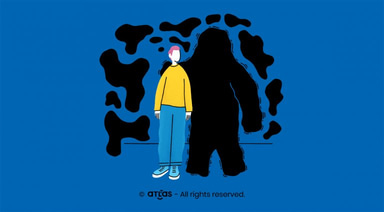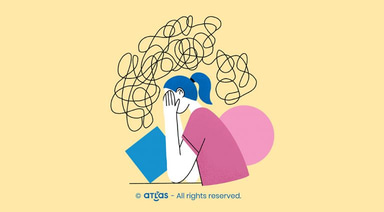Here in the ATLAS community, our mission is to restore people’s state of well-being, a goal achievable if we all learn how to relax, using various relaxation techniques. Simona Nicolaescu, psychotherapist, life coach and promoter of a balanced life in Romania, presented us with two methods of relaxation that we can use when the daily stress does not allow us to relax.
Here’s what Simona Nicolaescu says about stress and about how we can learn to relax:
Most people I work with in coaching and psychotherapy sessions suffer from stress and have not learned or been taught how to relax. Before we talk about bad relationships, anxiety, panic attacks, I think each one of us should take care in eliminating stress from his or her life or learn to relax. It is the basis for a healthy, balanced emotional life.
When you are stressed, your first reaction is physiological: your heart begins to pound, your breathing accelerates, your muscles contract. The first strategy for correct management of stress is to control these physical reactions.
One major problem arises from the fact that the physical reactions to stress mobilize people towards taking brutal action (the famous fight or flight response), but most stressful situations occur in the workplace, where you cannot respond by “fighting” or “taking flight”. When faced with an annoying colleague, a faulty copier or unbearable clients, preparing the body for physical action is useless and, in the long run, hard to bear.
The permanent state of tension of your body, throughout the day, easily explains the feeling of fatigue at the end of the day.
The relaxation response
The state of relaxation is completely opposite from a physiological point of view to that of stress. This means that, when you are relaxed, your body is oriented in a direction diametrically opposite to that of the stress state. Stress accelerates heartbeat, increases blood pressure and breathing frequency, triggers sweating, dilates pupils, etc. … in short, determines the contrary of what happens during relaxation.
Stress response and relaxation have very distinct characteristics, especially due to the fact that stress response, unlike relaxation response, is innate, meaning it is biologically constructed.
However, each person is familiar with the state of relaxation insofar as it is close to another state, which corresponds to one of the phases of sleep, called the “deep sleep phase”.
During the deep sleep phase, your body is completely relaxed: your muscles are completely relaxed, your heart is beating slowly, and your breathing is significantly slower. Spontaneously, your body discerns between the 2 states: the state of stress and the state of relaxation, the main idea being for you to learn to attain this state of relaxation while awake.
Relaxation techniques
The main 2 relaxation methods used all over the world are variants of either Schultz’s “autogenic training”, or Jacobson’s muscle relaxation technique. These are two techniques, both efficient and relatively simple, which allow the relaxation of one’s body.
Schultz’s autogenic training
This method of relaxation is based on the following principle: the relaxation of the mind and body will be obtained by inducing sensations with the help of mental representations. It focuses mainly on two sensations: the sensation of heaviness and the sensation of warmth.
- The sensation of heaviness in your limbs
When the muscles in your body are relaxed, you perceive them as being heavy. Sometimes, this relaxation appears very suddenly, especially when you fall asleep or wake up suddenly with the feeling of falling or jumping into a void. This is due to the fact that muscles decontract very quickly, and not progressively.
How do you obtain this feeling of heaviness? Imagine that your arms, legs, wrists are made of lead or stone. Visualize their weight and see how hard it is for you to move them, what effort you have to make to lift them. This way, you will artificially induce the sensation of heaviness and you will achieve the relaxation of the muscles.
- The sensation of warmth in your extremities
The sensation of warmth in the extremities corresponds to a phenomenon of “vasodilation”: small blood vessels open up to allow blood to circulate, whereas in a state of stress, they contract to expel the blood from the extremities and send it directly into the brain and muscles.
How do you get that feeling of warmth? Imagine that your hands are warm, that you are enjoying the heat coming from some rays of sunlight, or that you are sitting by the fire of a fireplace, and feel the heat that progresses through your entire body. When you begin to produce this sensation of warmth in your mind, you gradually manage to induce it in the body, and thus, you change your state of mind in the sense of relaxation.
Jacobson’s muscle relaxation technique
This relaxation technique involves working only on the muscles. You induce muscle relaxation through exercises that allow you to first contract your muscles, so that you can later relax them. When you feel tense, tell yourself “Now I will relax my shoulder muscles.” You will not succeed immediately, but if you contract them at first, you will feel tension, and later it will be much easier to decontract your shoulder muscles.
If you need guidance for learning these relaxation techniques or for becoming more at peace with yourself and others, schedule an individual meeting with Simona Nicolaescu.



